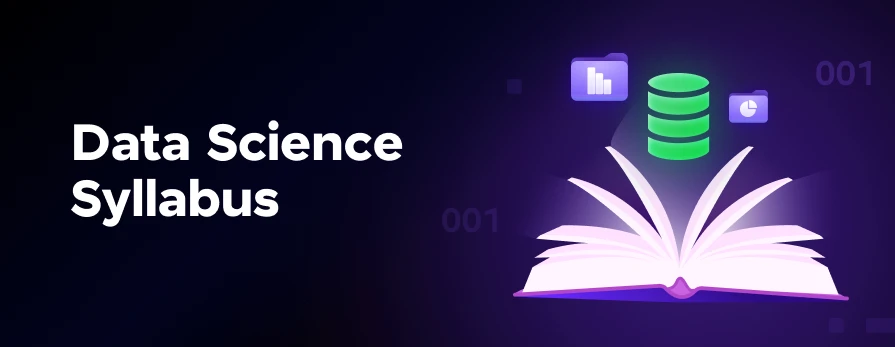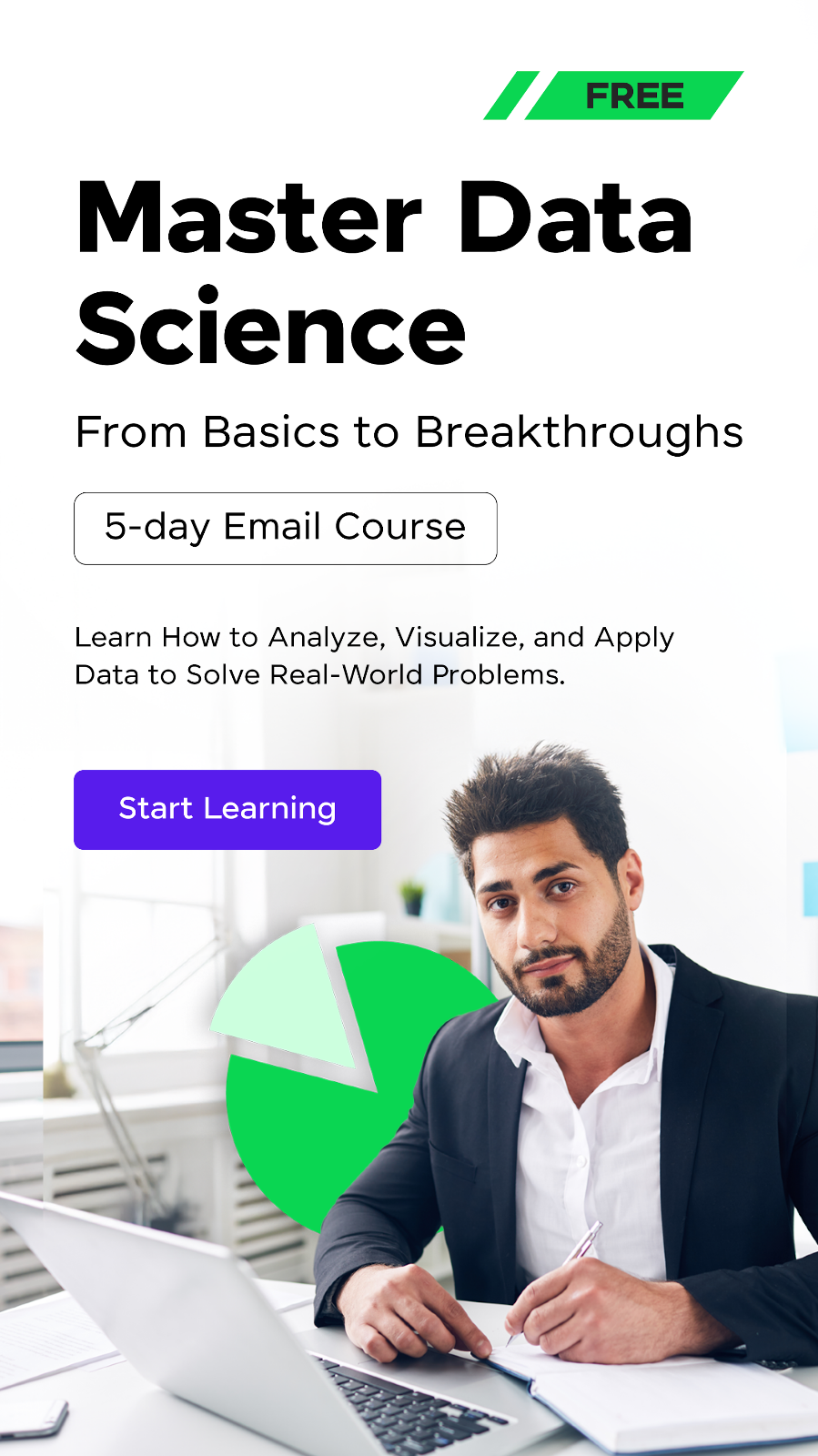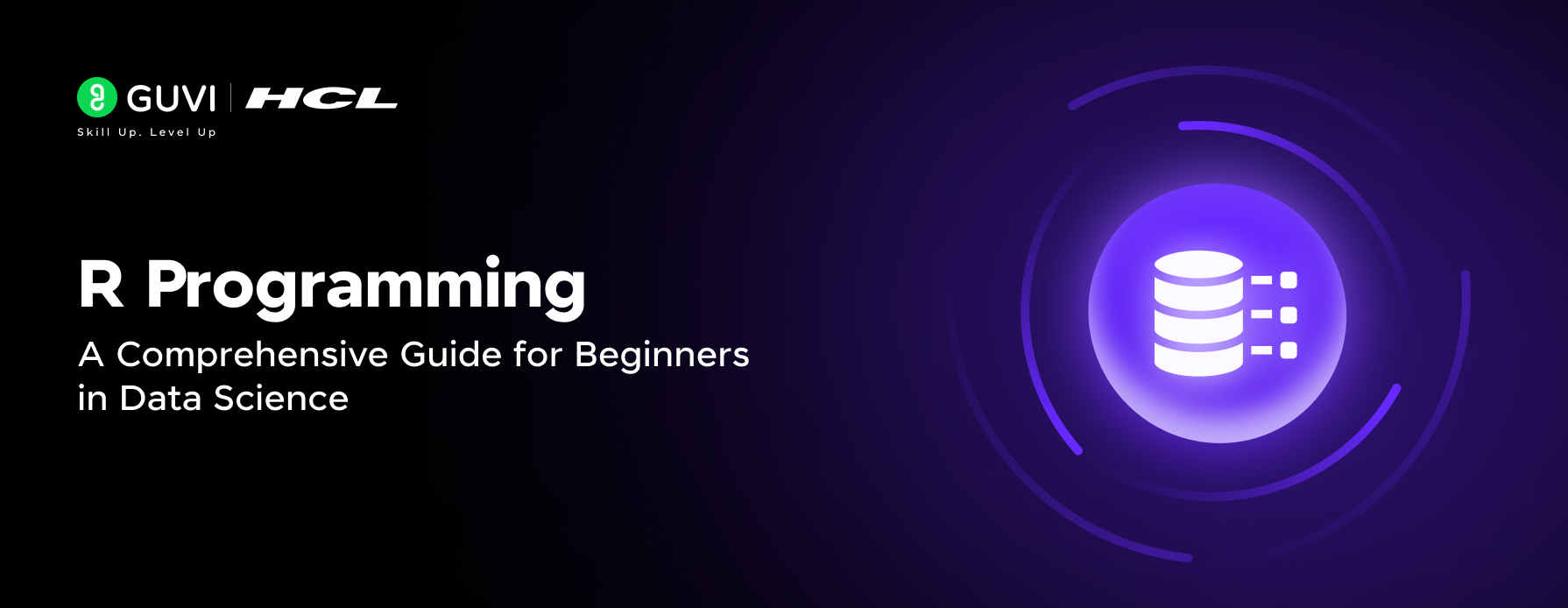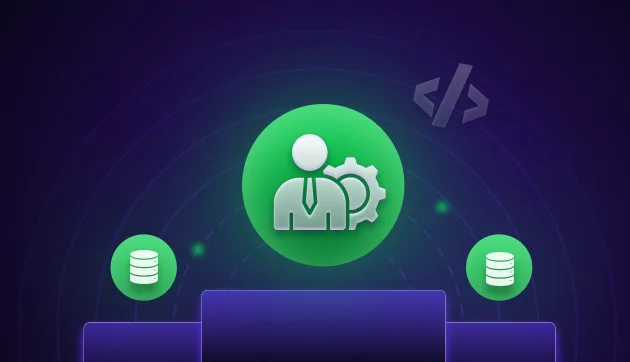
A Complete Guide on Data Science Syllabus | 2025
Mar 17, 2025 7 Min Read 7377 Views
(Last Updated)
Data Science is taking over the world by storm and if you still haven’t shifted your focus on data science, then you are missing out a lot.
However, with the wide reputation of data, where everything relies heavily on it, the field of data science is in top demand. That’s why, it might be overwhelming to get started at it! It’s ironically true!
So how to get started with data science? First, you need to understand what it consists of and that’s why we compiled this data science syllabus article.
Let us get started without any further ado!
Table of contents
- What is Data Science?
- Eligibility & Requisite Skills to be a Data Scientist
- Eligibility Criteria
- Requisite Skills
- Data Science Syllabus
- Programming Languages
- Mathematics and Statistics
- Data Wrangling and Cleaning
- Exploratory Data Analysis (EDA)
- Machine Learning
- Data Visualization
- Big Data and Tools
- Natural Language Processing
- Ethics and Data Privacy
- Capstone Project
- Duration of Data Science Syllabus
- Conclusion
- FAQ
What is Data Science?

No matter what you do, whether it’s business or tech-oriented work or even in real life, Data Science is at the core of everything that’s happening around us.
From Banking, education, finance, and health to the most vogue platforms of movies, and entertainment, data is what makes it all happen. And that is the reason why Data Science is now recommended to be instilled from a very young age.
Not over-exaggerating but it is safe to say that data is the new KING in this digital era! And why not? Without data processing, businesses tend to lose their market and become much weaker. Be it any cutting-edge technology, you can count on Data Scientists to improve its efficacy.
So, mastering Data Science will not only help you attain a great career profile but also add value to your social and professional presence.
Before we move into the next section, ensure you have a good grip on data science essentials like Python, MongoDB, Pandas, NumPy, Tableau & PowerBI Data Methods. If you are looking for a detailed course on Data Science, you can join GUVI’s Data Science Course with placement guidance. You’ll also learn about the trending tools and technologies and work on some real-time projects.
Eligibility & Requisite Skills to be a Data Scientist

While the field of data science remains a strong ground of opportunities equally for experienced professionals as well as beginners, it demands a great deal of hands-on experience with the right tools & technologies.
Becoming a data scientist requires a unique blend of education, technical skills, and problem-solving abilities. Whether you’re transitioning from another field or starting fresh, it’s essential to understand the eligibility criteria and skills necessary to succeed in this dynamic field.
Eligibility Criteria
- Educational Background:
- Bachelor’s Degree: The minimum requirement for most data science roles is a bachelor’s degree. Ideally, this should be in a related field such as computer science, mathematics, statistics, or engineering. However, degrees in other disciplines like economics or physics are also acceptable, provided you have a strong foundation in quantitative skills.
- Advanced Degrees (Optional): While not always required, having a master’s degree or Ph.D. in data science, machine learning, or a related field can give you a competitive edge. Advanced degrees are particularly valuable for research-intensive roles or positions in academia.
- Relevant Experience:
- Work Experience: Many employers prefer candidates with hands-on experience in data analysis, programming, or related fields. If you’ve worked in roles such as data analyst, business analyst, or software developer, you likely have transferable skills that can help you transition into data science.
- Internships and Projects: For those new to the field, internships or personal projects can demonstrate your capabilities. Participating in data science competitions (e.g., Kaggle) or contributing to open-source projects can also help build your portfolio.
Requisite Skills
Technical Skills:
- Programming: Proficiency in programming languages like Python and R is a must.
- Mathematics and Statistics: A strong grasp of mathematics, particularly in probability, linear algebra, and calculus, is necessary.
- Data Wrangling: You’ll need to be skilled in data wrangling, which involves cleaning and transforming data into a usable format for analysis.
- Machine Learning: Knowledge of machine learning algorithms, both supervised and unsupervised, is critical.
- Data Visualization: The ability to create clear and informative visualizations is essential for communicating your findings.
- Big Data Tools: As data scales, you’ll need to be comfortable with big data technologies like Hadoop, Spark, and NoSQL databases.
Analytical and Problem-Solving Skills:
- Critical Thinking: Data scientists need to be able to approach problems with a critical mindset. This means asking the right questions, identifying patterns, and thinking creatively to find solutions.
- Domain Knowledge: Understanding the specific industry you’re working in (e.g., finance, healthcare, marketing) is crucial. Domain knowledge helps you frame problems correctly and ensures that your solutions are relevant and impactful.
- Attention to Detail: Precision is key in data science. Small errors in data handling or modeling can lead to incorrect conclusions, so being meticulous is important.
Soft Skills:
- Communication: Data scientists must be able to communicate their findings to both technical and non-technical stakeholders. This involves not only presenting data visually but also explaining complex concepts in a way that’s easy to understand.
- Collaboration: You’ll often work in teams with data engineers, analysts, and business stakeholders. Being able to collaborate effectively is essential for integrating data science solutions into business processes.
- Adaptability: The field of data science is constantly evolving, with new tools and techniques emerging regularly. Being adaptable and open to learning new skills is crucial for staying relevant in the field.
Now that you know you are eligible for the course, and more or less imbibe all the skills that a Data Scientist needs, let’s get started and dig deeper into the Data Science Syllabus.
Data Science Syllabus

If you’re starting your journey in data science, understanding the data science syllabus is very important. It gives you a roadmap of what you’ll be learning, ensuring you’re well-prepared to tackle the challenges ahead.
Let us see the key things that there are in a data science syllabus:
1. Programming Languages
Proficiency in programming is a must for any aspiring data scientist. The syllabus typically focuses on Python and R, the two most popular languages in the field.
- Python: Python’s simplicity and versatility make it a favorite in the data science community. You’ll start with basic syntax and gradually move on to powerful libraries like:
- NumPy: Used for numerical computations and handling arrays.
- Pandas: Essential for data manipulation, cleaning, and analysis.
- Matplotlib & Seaborn: Visualization libraries that help you create informative charts and plots.
So, mastering Python in the data science syllabus is quite beneficial for every developer.
- R: R is another powerful language, especially for statistical analysis. You’ll learn how to perform data exploration, statistical modeling, and data visualization in R. The focus will be on using packages like dplyr for data manipulation and ggplot2 for creating elegant visualizations.
2. Mathematics and Statistics
Mathematics and statistics form the backbone of data science. A strong grasp of these subjects is essential for analyzing data, building models, and making informed decisions.
- Probability: You’ll dive into probability theory, learning how to calculate the likelihood of events and understand concepts like random variables, probability distributions, and Bayes’ theorem. Probability is crucial for making predictions and understanding uncertainty in data.
- Statistics: Statistics is about making sense of data. You’ll cover descriptive statistics (mean, median, mode, variance) to summarize data and inferential statistics (hypothesis testing, confidence intervals) to make predictions and decisions based on sample data.
- Linear Algebra: Linear algebra is the mathematical foundation of machine learning algorithms. You’ll learn about vectors, matrices, and operations like matrix multiplication and eigenvalues, which are essential for understanding algorithms like Principal Component Analysis (PCA) and neural networks.
- Calculus: Calculus plays a key role in optimization, which is critical for training machine learning models. You’ll learn concepts like derivatives and gradients, which help in minimizing error functions and improving model accuracy.
3. Data Wrangling and Cleaning
Real-world data is often messy, incomplete, and inconsistent. Data wrangling and cleaning are critical skills that every data scientist needs to master.
- Handling Missing Data: You’ll learn techniques to deal with missing values, such as imputation (filling missing data with mean/median/mode) or removing incomplete rows/columns. This ensures that your data is ready for analysis.
- Transforming Data: This involves converting data into a suitable format for analysis. You’ll work on tasks like normalizing data (scaling values to a specific range), encoding categorical variables, and feature scaling (standardizing features for model input).
- Feature Engineering: Feature engineering is the process of creating new features from existing data to improve model performance. You’ll learn how to create meaningful features by combining or transforming existing ones, which can significantly boost your model’s accuracy.
4. Exploratory Data Analysis (EDA)
Exploratory Data Analysis (EDA) is the process of analyzing and visualizing data to uncover patterns, trends, and relationships. This step is crucial before building any models.
- Descriptive Statistics: You’ll start by summarizing the data using descriptive statistics, such as mean, median, standard deviation, and correlation. This helps you understand the central tendency and variability of the data.
- Data Visualization: Visualization is a powerful tool for EDA. You’ll learn how to use libraries like Matplotlib and Seaborn to create histograms, scatter plots, box plots, and heat maps. These visualizations help you spot patterns, outliers, and potential relationships between variables.
- Hypothesis Generation: EDA isn’t just about looking at the data; it’s about asking questions. You’ll learn to generate hypotheses based on your observations and use statistical tests to validate them. This step is essential for guiding your analysis and model-building process.
5. Machine Learning
Machine learning is at the heart of data science, and this part of the syllabus dives deep into various algorithms and techniques.
- Supervised Learning: You’ll start with supervised learning algorithms, where the model is trained on labeled data (data with known outcomes). Key algorithms include:
- Linear Regression: For predicting continuous outcomes.
- Logistic Regression: For binary classification tasks.
- Decision Trees & Random Forests: For both classification and regression tasks.
- Support Vector Machines (SVM): For classification with complex boundaries.
- Unsupervised Learning: Unsupervised learning deals with unlabeled data, where the goal is to find patterns and groupings. You’ll explore algorithms like:
- K-Means Clustering: For grouping similar data points into clusters.
- Principal Component Analysis (PCA): For reducing the dimensionality of data while preserving variance.
- Deep Learning: Advanced data science courses often cover deep learning, where you’ll learn about neural networks, backpropagation, and frameworks like TensorFlow and Keras. Deep learning is particularly powerful for tasks like image recognition and natural language processing.
6. Data Visualization
Data visualization is all about presenting data in a way that’s easy to understand and interpret. This skill is crucial for communicating your findings to both technical and non-technical audiences.
- Creating Visualizations: You’ll learn how to create various types of visualizations, such as bar charts, line graphs, pie charts, and more complex plots like heatmaps and scatter matrices. Tools like Tableau, PowerBI, and Python’s visualization libraries will be your go-to resources.
- Telling a Story with Data: Visualization isn’t just about making pretty charts; it’s about telling a story. You’ll learn how to present your findings in a way that highlights key insights and supports your conclusions. This involves choosing the right type of visualization, labeling axes clearly, and providing context for your audience.
Plotly’s Dash is a famous open-source data visualization library that you can use to build custom data visualization projects. Plotly’s Dash allows better storytelling.
7. Big Data and Tools
As data continues to grow in volume, you’ll need to learn how to handle and process big data. This part of the syllabus focuses on tools and technologies that make working with large datasets manageable.
- Hadoop: Hadoop is a framework that allows you to store and process large datasets across distributed systems. You’ll learn about Hadoop’s ecosystem, including HDFS (Hadoop Distributed File System) and MapReduce, which enables parallel processing of data.
- Spark: Apache Spark is a fast and general-purpose cluster computing system. You’ll explore how Spark can be used for big data processing, with a focus on its in-memory computation and real-time data processing capabilities.
- NoSQL Databases: Traditional SQL databases aren’t always suitable for big data. You’ll learn about NoSQL databases like MongoDB and Cassandra, which are designed to handle unstructured data and scale horizontally across multiple servers.
8. Natural Language Processing
You might have surely heard about Natural Language Processing (NLP). Firstly, form a base with Syntactic analysis. Learn parsing to analyze text using basic grammar rules to identify sentence structure, how words are organized, and how words relate to each other.
Later on, you can get a clear picture of Semantic Analysis. Semantic Analysis focuses on capturing the meaning of the text. First, it studies the meaning of each individual word (lexical semantics). Then, it looks at the combination of words and what they mean in context.
Some of the essential sub-tasks of semantic analysis are Word sense disambiguation, Relationship extraction, etc. Besides that, also explores Sentiment Analysis, Text extraction, etc.
9. Ethics and Data Privacy
With great power comes great responsibility. Since Data science is a great power, it comes with great responsibility. You’ll learn about ethical considerations, data privacy laws, and best practices for handling sensitive data in this data science syllabus.
The key topics that you should consider learning when it comes to ethics and data privacy are GDPR, data anonymization, and ethical AI.
10. Capstone Project
The capstone project is your opportunity to apply everything you’ve learned to a real-world problem. It’s a crucial part of the syllabus, as it allows you to showcase your skills and build a portfolio piece that you can present to potential employers.
- Choosing a Project: You’ll select a project that aligns with your interests and career goals. This could involve working with publicly available datasets, such as those on Kaggle, or even collecting your own data through web scraping or APIs.
- Data Collection and Cleaning: You’ll gather and clean your dataset, preparing it for analysis. This step involves handling missing data, transforming features, and ensuring your data is in the right format.
- Model Building: You’ll apply the machine learning techniques you’ve learned to build and train models. This includes selecting the right algorithm, tuning hyperparameters, and evaluating model performance.
- Presentation: Finally, you’ll present your findings in a clear and compelling manner. This involves creating visualizations, writing a report, and possibly even giving a presentation. The goal is to communicate your insights effectively to both technical and non-technical audiences.
Always keep ethics in mind when working with data. It’s not just about what you can do with data, but what you should do.
Duration of Data Science Syllabus
If you are someone who is taking up the course on your own, then your duration of completion, depending upon your enthusiasm to learn and interest may vary somewhere between 3-5 months.
Typically, for any working professional or a student who takes up the course on weekends, the time taken to master all the above fundamentals of the Data Science syllabus, maybe anywhere around 5 months.
We recommend that you follow this Data Science syllabus and cover every topic with a detailed study of every concept. Practice and build unlimited knowledge by building intriguing projects.
Conclusion
In conclusion, the data science syllabus is vast, but by breaking it down into these core topics, you can approach it step by step.
Whether you’re taking a formal course or self-studying, this guide gives you a roadmap for your data science journey. Stay curious, practice regularly, and don’t be afraid to explore new areas, data science is all about continuous learning.
FAQ
The best way to start learning data science is by gaining a strong foundation in mathematics, programming, and statistics. Familiarize yourself with Python or R, and then explore libraries like NumPy, Pandas, and Scikit-learn for data manipulation and machine learning.
While a background in computer science can be beneficial, it is not a strict requirement. Many successful data scientists come from diverse educational backgrounds, including mathematics, engineering, and social sciences.
Apart from technical skills, data scientists need strong problem-solving abilities, critical thinking, and effective communication. Domain knowledge and the ability to work in cross-functional teams are also valuable assets.
Yes, you can learn data science without a formal degree. There are plenty of self-paced online resources, boot camps, and courses that cater to individuals without a formal background in data science.
Data science offers promising career prospects with high demand across various industries. Data scientists are sought after for their ability to derive valuable insights and aid in data-driven decision-making, making it a lucrative and fulfilling career path.






















![Top 10 Mistakes to Avoid in Your Data Science Career [2025] 7 data science](https://www.guvi.in/blog/wp-content/uploads/2023/05/Beginner-mistakes-in-data-science-career.webp)


Did you enjoy this article?